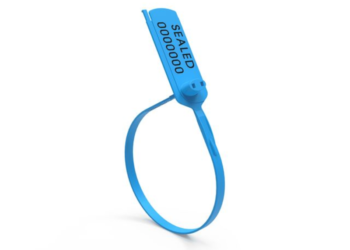Validating and certifying a security seal as ISO 17712 compliant involves a rigorous process to ensure that the seals meet the international standards set forth by the International Organization for Standardization (ISO). ISO 17712 specifically outlines the requirements for mechanical seals intended to be used for securing containers in international trade, providing a crucial layer of security to prevent tampering, theft, and unauthorized access to goods during transit. The certification process involves several stages to verify that the security seals adhere to the standards outlined in ISO 17712.
Initial Assessment and Design:
The process begins with the design and development of a security seal that conforms to ISO 17712 specifications. Manufacturers assess the design and functionality of the seal, ensuring it meets the required tamper-evident features, strength, and durability standards. This stage includes engineering analyses, material selection, and prototype testing.
Manufacturing Process Evaluation:
Manufacturers need to establish a consistent and reliable manufacturing process that can produce seals meeting ISO 17712 standards. This involves documenting the manufacturing process, quality control measures, and materials used. The goal is to ensure that each seal produced adheres to the required specifications and maintains its integrity during production.
Testing and Validation:
Once the manufacturing process is established, a batch of seals is produced and subjected to rigorous testing. This testing includes physical strength tests, such as tensile strength and shear tests, to assess the seal’s ability to withstand tampering attempts without breaking or being compromised. Additionally, tests for tamper-evident features, like locking mechanisms and markings, are conducted to ensure they function as intended.
Independent Testing and Certification Bodies:
To achieve ISO 17712 compliance, manufacturers often engage independent testing and certification bodies. These bodies are accredited to assess and verify that the security seals meet the ISO standards. They conduct thorough testing on samples of the seals to ensure they meet the required specifications. The testing covers aspects such as tamper resistance, tamper-evident features, and strength.
Documentation and Traceability:
Manufacturers are required to maintain detailed documentation of the entire design, manufacturing, and testing processes. This includes records of materials used, production methods, testing procedures, and results. Traceability is crucial for maintaining consistency in seal production and addressing any issues that may arise in the future.
Audit and Inspection:
Manufacturers are subject to periodic audits and inspections by the certification bodies to ensure ongoing compliance with ISO 17712 standards. Auditors review the manufacturing processes, quality control measures, and documentation to verify that the seals being produced continue to meet the required criteria.
Certification Issuance:
Once the independent certification body is satisfied with the manufacturer’s adherence to ISO 17712 standards, they issue a certification attesting to the compliance of the security seal. This certification is a formal recognition that the seal is suitable for securing international shipments and has met the stringent requirements set by ISO.
Ongoing Compliance and Renewal:
ISO 17712 compliance is not a one-time achievement. Manufacturers must continuously adhere to the standards to maintain the certification. Regular audits and assessments are conducted to ensure that the manufacturing process remains consistent and that the seals produced continue to meet ISO requirements. Certifications are typically valid for a certain period and need to be renewed through regular audits.
Conclusion:
the process of validating and certifying a security seal as ISO 17712 compliant is a comprehensive journey involving design, manufacturing process evaluation, rigorous testing, independent verification, documentation, audits, and ongoing compliance. This meticulous process ensures that the security seals meet the highest international standards for tamper resistance, strength, and reliability, thereby enhancing security in global trade and transportation.











